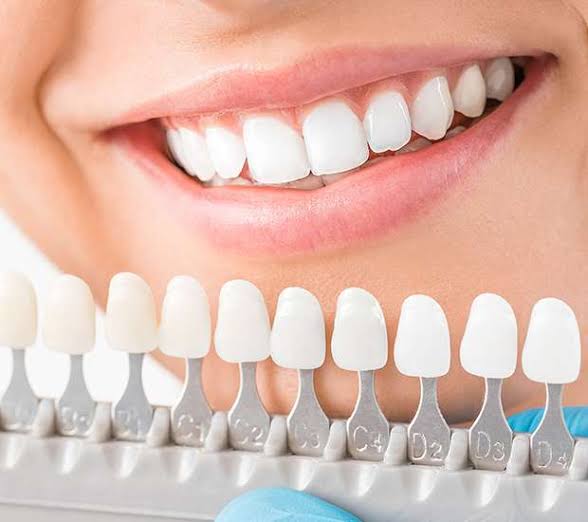WHAT IS COSMETIC DENTISTRY ?
Cosmetic dentistry, often known as aesthetic dentistry, aims to improve not just the appearance of your teeth but also of your gums and/or bite. It is primarily utilized to enhance your smile and mouth shape, which can even extend to enhancing how well your teeth operate in terms of the force and form of your bite. But unlike teeth whitening, this form of dental work is mostly focused on enhancing your tooth’s appearance rather than necessarily its functionality.
Functional gains are frequently unintended by successful cosmetic dentistry procedures. The following characteristics set it apart from conventional dental, gingival, and oral practices with regard to the health of your teeth, gums, and mouth.
• Aesthetic dentistry is primarily concerned with enhancing the color, shape, size, location, and alignment of your teeth as well as the general appearance of your smile. This also applies to healthy gums that can be surgically changed to improve jaw shape and a smile’s gummy appearance. While some may contend that dental procedures alone can improve both form and function, others prefer to use dentistry that focuses just on improving the appearance of their teeth.
• The Job Duties of Aesthetic Dentists: Although they are known as aesthetic dentists, cosmetic dentists are more generally used to refer to those dentists who specialize in aesthetic dentistry. Despite the fact that this style of dentistry is not regarded as a formal specialization, their specialized work experience, education, training, and expertise are concentrated on it. Although there are over-the-counter teeth whitening products, a cosmetic dentist is still preferred because these procedures offer the best success rates for whitening discolored teeth.
• Aesthetic Dentistry Controversies and Realities: There is debate over the ethics of the practice when it comes to dentists who specialize in cosmetic dentistry or who identify as such because the practice’s main goal is to position these individuals as the dental equivalent of a plastic surgeon for patients.
Types of aesthetic dentistry
The following procedures may be included in aesthetic or cosmetic dentistry for your teeth, gums, mouth, and jaw, which may also include orthodontics (braces) and prosthodontics (dentures).
• Dental Material Addition: By asking your cosmetic dentist to add dental material to your gums or teeth, you can end up with a megawatt grin to compete with Tom Cruise’s or Brad Pitt’s. Gum grafts, porcelain veneers or laminates, crowns or caps, and bonding procedures can all be ordered individually for your teeth and gums.
• The Removal of Dental Material: Your gums may need to be repositioned if you have a gummy grin in order to expose more teeth. The same applies if you or your dentist believe that your teeth are overly large. Gingivectomy is the term for gum removal. Enameloplasty refers to the scaling and removal of enamel. Some dental offices offer bonding and tooth contouring at the same appointment.
• Cosmetic Improvements without Adding or Removing Anything: Aesthetic procedures designed to enhance your smile can be performed without adding or removing gum tissue, tooth structure, or other dental components. This involves laser whitening or bleaching of your teeth’s enamel, gum depigmentation to get the proper gum color, and other procedures.
• Teeth that have been properly straightened through procedures like wearing braces or retainers, sometimes known as orthodontic dentistry, should be able to improve your overbite, under bite, or horse-like teeth. As a result of how significantly your jaw, chin, and cheeks have changed, your face will then look better.
Advantages of cosmetic dentistry
Let’s look at an instance to better grasp the advantages of this strategy. Pretend you want your grin to be brighter and less crooked because you are not satisfied with it.
A cosmetic-only strategy could result in a symmetrical, Chiclet-white smile with celebrity status (if not a little fake looking). Although the smile is perfect, it can not appear genuine or genuine.
On the other hand, an aesthetic approach aims for more than just a flawless smile. It combines a variety of scientific strategies with artistic abilities to help you achieve oral wellness and a smile that complements and fits your natural characteristics and personality.



